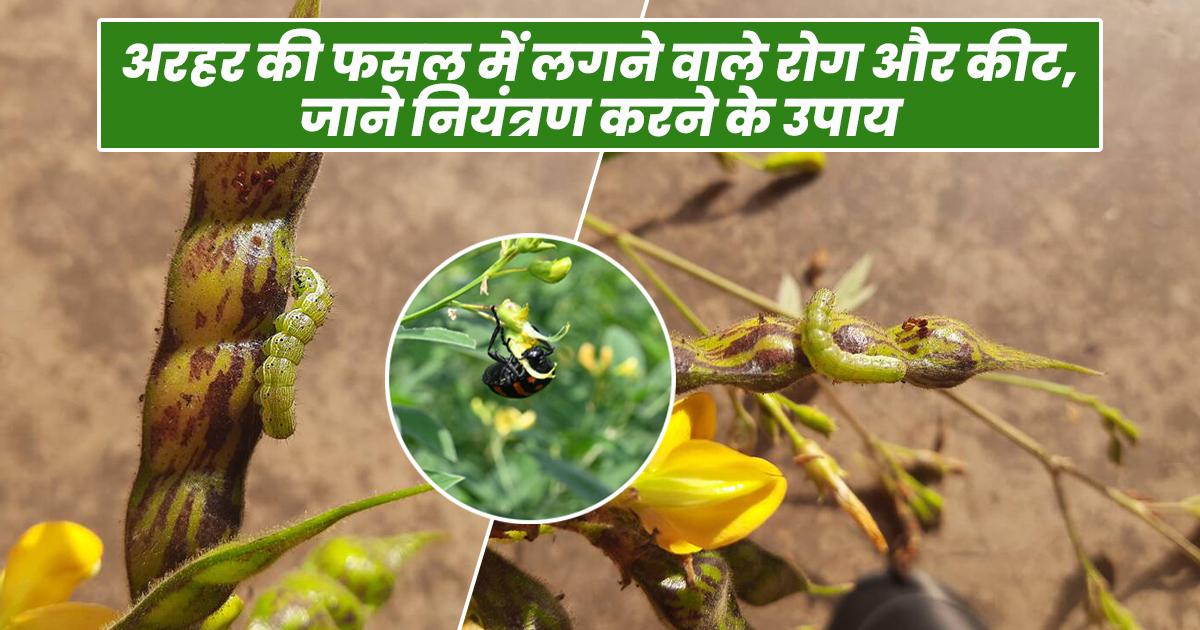
India is the largest producer and consumer of pulses in the world. Pulses are cultivated across approximately 23.2 million hectares in the country, with pigeon pea (tur) being one of the most important pulse crops. However, this crop is highly vulnerable to various pests and diseases, which can significantly impact yield. To ensure healthy crop growth and maximize productivity, farmers must identify the major pests and diseases affecting pigeon pea and adopt effective management techniques.
1. Leaf Folder Pest:
Control Measures:
Biological Control: Spray 5 ml of neem oil per liter of water on affected plants.
Prepare neem extract by boiling 25 kg of crushed neem leaves in 50 liters of water until the volume reduces to 20-25 liters, then filter and spray.
2. Pod Borer Pest:
Control Measures:
Install pheromone traps at a distance of 30 meters apart in the field.
Biological Control: Spray a 5% neem seed powder solution mixed with a 1% soap solution.
Chemical Control: If infestation persists, apply 1 ml of Indoxacarb 15.8% EC per liter of water or 1 ml of Spinosad 45% SC per 2 liters of water at 50% flowering and pod formation stages.
3. Fruit Fly Pest:
Control Measures:
Spray a 2% neem oil solution when eggs are first detected.
Chemical Control: Apply 1237 ml of Dimethoate 30% EC per hectare.
Major Diseases in Pigeon Pea and Their Control
1. Fusarium Wilt (Wilting Disease):
Symptoms include yellowing of leaves, wilting, drying of stems, and rotting roots.
Control Measures:
Deep plowing during summer to eliminate disease-causing pathogens.
Seed treatment before sowing to prevent infection.
2. Alternaria Leaf Spot:
Causes brown circular spots on leaves, leading to leaf drop.
Control Measures:
Spray Carbendazim fungicide on affected plants.
Select disease-resistant varieties.
3. Powdery Mildew Disease:
Identified by white powdery growth on leaves, stems, and pods.
Control Measures:
Apply sulfur-based fungicides as a preventive measure.
General Care for Pigeon Pea Crop:
Read More- Pigeon Pea Cultivation